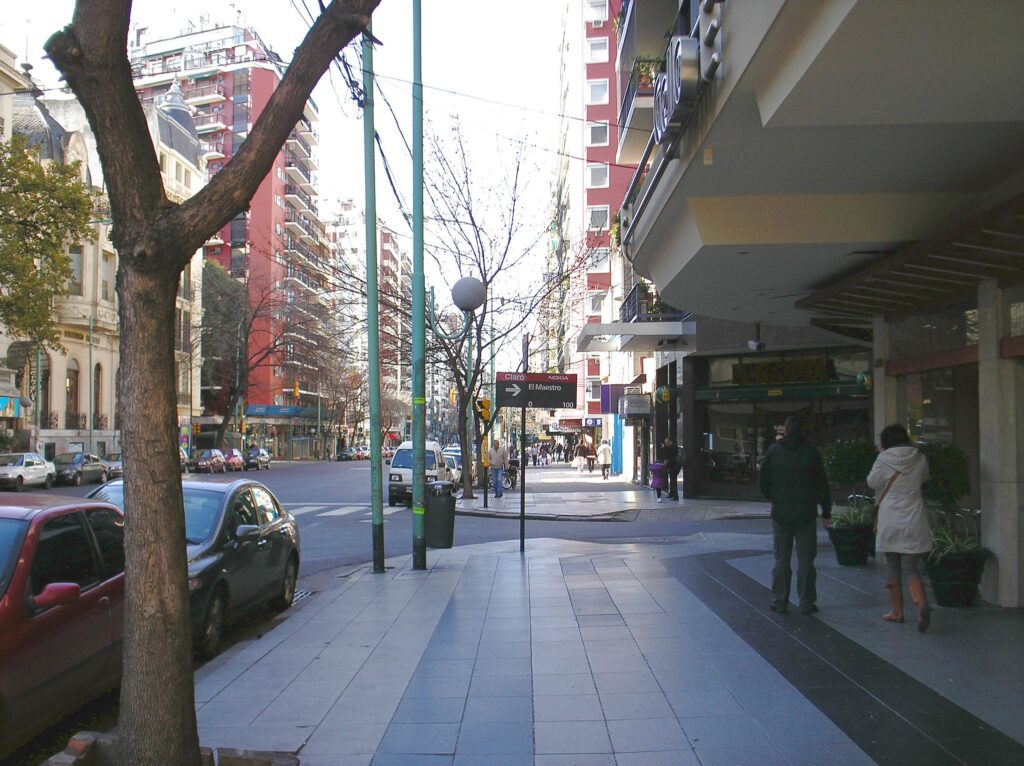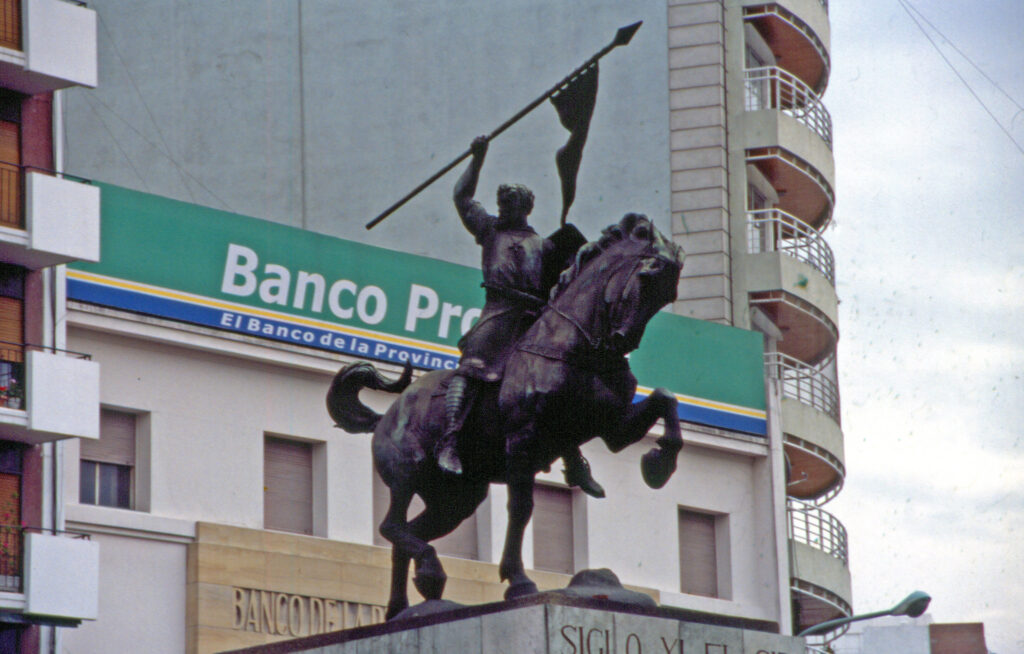Caballito is a neighborhood in Buenos Aires that has mutated in its appearance and dynamism. Despite its central location, historically it was a neighborhood chosen by the middle class of Buenos Aires, who were able to rent or purchase their own home in the area.
However, in recent years Caballito has not been exempt from the growth of the City of Buenos Aires. How does this manifest itself in the neighborhood? Mainly in the growth of commercial activity and the development of real estate projects. Thus, low houses have begun to give way to towers and multi-story buildings.
Caballito has a lot to offer you as a foreigner who wants to live in Buenos Aires. It is true, perhaps it does not have the picturesque side of San Telmo, the history of the center of Buenos Aires or the modernism of the Palermo area; but it offers the perfect balance between tranquility and movement.
Caballito (Buenos Aires): Everything You Need to Know About the Neighborhood
Basic Information About the Caballito Neighborhood (Buenos Aires)
Caballito is part of commune 6 in the City of Buenos Aires, covering an area of 6.8 km², making it one of the largest neighborhoods in the city.
The neighborhood’s name originates from a tavern established in 1821 by Nicolás Vila at the corner of what are now Rivadavia and Emilio Mitre streets, known for its distinctive horse-shaped weathervane.
Like other western neighborhoods, Caballito thrived with the arrival of the railway in 1857, which adopted the name of the famous tavern for its local station.
Initially a luxurious weekend retreat with estates along Avenida Rivadavia, Caballito developed significantly with the tramway and later the subway, becoming one of Buenos Aires’ most residential areas. Within Caballito lies the geographic center of the city.
The Primera Junta Square features a replica of the original horse-shaped weathervane, harking back to the times when the neighborhood was a mandatory rest stop before entering Buenos Aires.
Avenida Rivadavia is the commercial hub, particularly between Avenida La Plata/Río de Janeiro and Del Barco Centenera/Rojas, with the intersection at Avenida Acoyte and its continuation, Avenida José María Moreno, marking the neighborhood’s center.
This area houses numerous shopping galleries and is a key transit point with multiple bus lines and the Acoyte subway station on line A.

Where Is Caballito Located?
Caballito is centrally located in Buenos Aires, named after the tavern established in 1821 by Nicolás Vila, recognized for its horse-shaped weathervane.
Boundaries:
- Río de Janeiro
- Avenida Rivadavia
- Avenida La Plata
- Avenida Directorio
- Curapaligüe
- Avenida Tte. Gral. Donato Álvarez
- Avenida Juan B. Justo
- Avenida San Martín
- Avenida Gaona
- Avenida Ángel Gallardo
Caballito borders Almagro to the east, which has similar characteristics but fewer green spaces. To the south is Parque Chacabuco, a more residential area with another major green space.
To the west, Caballito borders Flores, which shares similar traits but with a more diverse population, including significant Peruvian and Bolivian communities.
To the north are the bohemian neighborhoods of Villa Crespo and Paternal, with Villa Crespo being more similar to Palermo and Paternal being more residential.
Highlights and historical places of Caballito
Green Spaces:
- Parque Rivadavia (former Quinta Lezica)
- Parque Centenario
- Plaza Irlanda
- Primera Junta Square (a dry square)
Religious Sites:
- Parroquia Nuestra Señora de Caacupé
- Basílica Nuestra Señora de los Buenos Aires
- Parroquia de Santa Julia
- Parroquia de Nuestra Señora de los Dolores
- Iglesia San José de Calasanz
Educational Institutions:
- Instituto Social Militar Dr. Damaso Centeno
- Colegio Marianista
- Colegio San José de Calasanz
- Colegio Santa Rosa
- Instituto Divino Rostro
- Colegio Redemptrix Captivorum
- Colegio Santa Brígida
- Colegio Monseñor Dillon
- Colegio Santa María
- Colegio San Cirano
- Colegio Canadá
- Universidad de Buenos Aires (Faculty of Philosophy and Letters)
- Instituto Universitario de la Policía Federal Argentina
- Universidad Maimónides
Health Facilities:
- Hospital Durand
- Sanatorio Municipal Doctor Julio A. Méndez
- Instituto del Quemado
- Instituto de Zoonosis Luis Pasteur
Historic and Cultural Attractions:
- Tramway Histórico de Buenos Aires (historical tramway ride)
- Mercado del Progreso (a covered market)
- Depósito de Gravitación del Barrio de Caballito (water reservoir)
- Geographic center of Buenos Aires
Sports Clubs:
- Club Ferro Carril Oeste (founded in 1904)
Caballito offers a rich blend of history, culture, and modern amenities, making it an appealing destination for residents and visitors alike. Whether you are exploring its green spaces, enjoying its historical tramway, or shopping in its bustling commercial areas, Caballito has something for everyone.
Public Transport Network in Caballito
Caballito is well-connected by various modes of public transport. The Sarmiento line (Caballito station), the A line of the subway (stations Río de Janeiro, Acoyte, Primera Junta, Puán, and Carabobo), and the E line (stations Avenida La Plata and José María Moreno) serve the neighborhood. Additionally, numerous bus lines traverse the area.
Caballito also features several cyclist routes, including protected bike lanes and paths near parks. You will find multiple Ecobici stations, allowing you to rent public bicycles using a simple app.
Overall, Caballito is seamlessly integrated into the City of Buenos Aires, providing easy access in all directions whether you prefer to use your own vehicle, a bicycle, or various public transport options.

Green Spaces in Caballito
Caballito boasts several green spaces. Parque Rivadavia, formerly Quinta Lezica, is centrally located and the most iconic. Other notable green spaces include Parque Centenario and Plaza Irlanda, situated on the neighborhood’s boundaries. Plaza Primera Junta is unique as a dry square.
Caballito is fortunate to have abundant green spaces, making it ideal for outdoor activities regardless of where you live in the neighborhood. The large parks ensure that tall buildings do not block sunlight from the green areas.
Advantages of Living in Caballito
- Residential Appeal: Caballito is a popular residential area for the middle class.
- Diverse Housing Options: While there are areas with low-rise houses, modern multi-story buildings are becoming more common, increasing rental options for both short-term and long-term stays.
- Green Spaces: The neighborhood is rich in green spaces.
- Affordable Living: Living in Caballito is not overly expensive and is average for Buenos Aires.
- Excellent Connectivity: There is good connectivity with major transport modes including subways, trains, and buses.
- Commercial Activity: Caballito has vibrant commercial centers, streets with shops, and a wide range of restaurants and bars.
- Balanced Lifestyle: Caballito offers a tranquil yet central and safe environment, making it a compelling choice for anyone looking for a balanced lifestyle.
Activities and Things to Do in the Caballito Neighborhood (Buenos Aires)
The Last Tram in Buenos Aires
Caballito is home to the last tramway in Buenos Aires. This historic mode of transport was popular in the early 20th century but gradually lost ground to buses and subways.
The Asociación de Amigos del Tranvía operates the historic tramway, offering free rides as an invitation to experience these vintage vehicles.
Enjoy the Green Spaces
Caballito’s green spaces, such as Parque Centenario and Parque Rivadavia, are plentiful. Despite being a central neighborhood, it offers two of the largest parks in Buenos Aires.
These parks are spacious and full of activities, from weekend fairs to lakes, sculptures, and extensive walking paths.
Museo de Ciencias Naturales (Bernardino Rivadavia)
Located on the perimeter of Parque Centenario, the Bernardino Rivadavia Natural Sciences Museum is one of the most impressive natural science museums in Buenos Aires.
It features extensive collections in zoology, geology, and paleontology, among others. The museum’s dinosaur exhibits are particularly noteworthy.
Restaurants and bars
Although historically residential, Caballito has seen a transformation in recent years with an influx of bars, breweries, and restaurants. It now rivals other popular neighborhoods like Puerto Madero and Palermo in its gastronomic offerings.
From specialty coffee shops to cocktail bars and restaurants, you will find a diverse range of culinary experiences, especially along Avenida Rivadavia.
Patio de los Lecheros
This historic site, once a hub for milk vendors in Buenos Aires, was revitalized in 2016 after being abandoned. Today, it is a vibrant spot where locals and tourists can enjoy a wide variety of food and recreational activities, reflecting the diverse cultures of the city.
Caballito offers a unique blend of residential tranquility, vibrant commercial activity, and rich cultural heritage, making it an attractive neighborhood for residents and visitors alike. Whether you are exploring its historic tram, enjoying the green spaces, or indulging in its diverse culinary scene, Caballito has something to offer everyone.
Last Considerations
Caballito, one of the most vibrant neighborhoods in Buenos Aires, has everything you need to know to make the most of your visit or stay.
This guide from ExpatPathways will help digital nomads, travelers, and expats uncover the charm of Caballito, from its rich history and expansive green spaces to its excellent public transport network and bustling commercial areas.
Dive into the heart of Buenos Aires and discover why Caballito is the perfect blend of residential tranquility and urban excitement.
(Featured Image Source: Protoplasma K/flickr.com)


